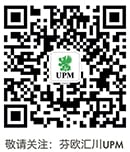Ensuring recyclability at the design stage
To ensure compatibility with the recycling infrastructure, it is essential to have clear Design for Recycling (DfR) guidelines and to know in what type of collection, sorting and recycling infrastructure the material will be treated. While the European Commission’s design guidelines in the upcoming Packaging and Packaging Waste Regulation are yet to be finalised, 4evergreen, a cross-industry alliance initiated by Cepi, have unofficially published two sets.
They consider two kinds of recycling plants, those with standard recycling and those that deal with more challenging materials like paper cups and liquid packaging boards.
The guidelines define the substances used to create functional layers, sealing solutions, adhesives and inks, allowing a packaging designer to help increase the amount of recovered fibre in the recycling process yield through the right choices. The goal of 4evergreen is to reach a 90% recycling rate for fibre-based packaging by 2030.
Packaging is not the only end-use with ambitious targets for recycling. CELAB (a Circular Economy for Labels) is targeting over 75% of used release liner and label matrix materials to follow a circular business model by 2025 and AFERA (the European adhesive tape industry network) aims to establish best practice for the management of adhesive tape waste.
All of UPM Specialty Papers’ products are designed for recycling.
Read more about how we ensure the recyclability of our products
Fresh fibre is needed to keep the cycle going
With each cycle of recycling, there is an inevitable loss in strength, so new fibre must be added to the loop. The proportion of recycled fibre used in the raw materials depends on the purpose since different paper products require various properties depending on their intended use.
When the fibre has been recycled many times, its quality deteriorates because the length of the fibres shortens, which is why new fibre must also be added to the cycle. The proportion of recycled fibre used in the raw materials depends on the purpose since different paper products require various properties depending on their intended use. The fibre shortens when the paper is repulped and printing inks and other substances are removed during the cleaning process.
The fibre recycling loop works with a cascading model. First, recycled fibres can be used to produce papers where high strength is needed. UPM Specialty Papers has for example, innovated a process for recycling high-quality base papers in a closed-loop into new high-performance release base papers. In the second cycle, the same recycled fibre could be used for high-quality magazine paper, for example. As the fibre loses its strength, in subsequent cycles the fibre could be downcycled into a cardboard box and in its final incarnation into products like toilet paper cores and egg cartons, for example.
Consider food safety
Some paper products need to be made entirely from virgin fibre. For example, the paper used for food packaging must be pristine because it is in contact with the food; recycled fibres can contain substances that are not suitable for direct food contact. Newspaper inks which may remain as residues in the recycled pulp, for instance, typically contain mineral oils (MOSH & MOAH). In addition, the packaging must be strong and durable to protect the contents and prevent food waste.
Therefore, currently recycled fibres are best suited for non-food end-uses. If recycled fibres are used, an additional layer – like a barrier paper - is needed to provide a barrier that prevents migration.
Compostability as an alternative
While recycling is always the primary option for a paper product, compostability is a good alternative if the food packaging is left with too much food residue to be recycled. Furthermore, using compostable papers helps ensure that if the food package is not recycled properly, it does not end-up as litter in the environment but will eventually decompose.
While it is estimated that fossil-based materials take hundreds of years to decompose, the industrial compostability standard requires that material disintegrates into soil in less than 12 weeks. UPM provides a range of papers that are certified for both industrial and home compostability.
For more understanding of how the paper recycling process works and the recyclability of packaging, reach out to our sustainability team, who will happily answer your questions.
